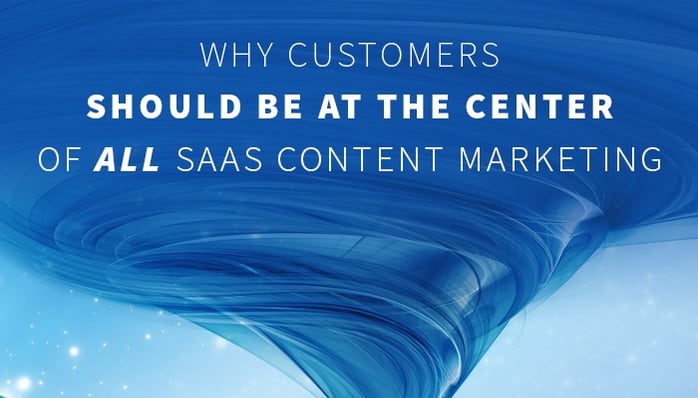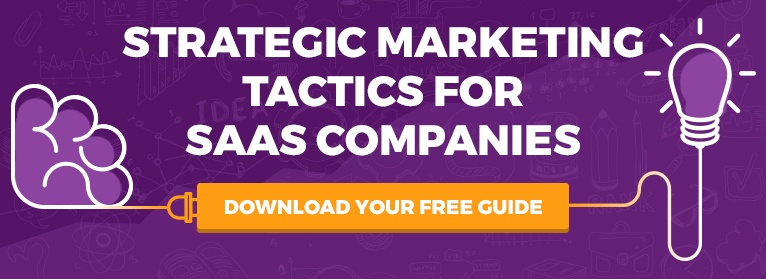 One of the biggest mistakes you can make as a founder is to assume your website is about your business.
One of the biggest mistakes you can make as a founder is to assume your website is about your business.
Crazy, right?
Your website, which was designed to bring in customers for your company, is not at its core about you. It is in fact about them - the most important “them” of all - your customers.
This should make total sense when you stop and think about it. Your customers are the ones making decisions through your website. They are the ones who need to like what they see and be compelled to make a purchase.
So how do you make a website that is for your company, but is actually all about your customers instead?
The answer is to build a customer-centric content strategy. And it’s one of the key factors which separates a kick-saas content marketing strategy from a ho-hum attempt.
What is a customer-centric content strategy?
Just as its name implies, customer centricity starts from the perspective of the customer, instead of from the perspective of the business.
A customer-centric content strategy focuses on the benefits the customers will gain from the relationship instead of the features a business/product offers.
This is a lot easier said than done. But when it’s done well, customer-centric content is a powerful psychological motivator.
Humans are primed to relate to things that feel familiar. We like content that speaks to our values, uses the language we use, and helps us solve issues that are important to us. These triggers allow brands to relate to customers on a personal level by tapping into the psychological slam dunk of “familiarity.”
But customer-centricity goes beyond the touchy-feely, let’s be best friends, good stuff. It provides a backbone for your entire content strategy. It ensures that no (saas)holes are left unfilled, and that all of your customers' questions and concerns are answered.
All of these key benefits of a customer-centric campaign are achieved by completing a few important steps:
- Identifying your ideal customers
- Defining the value proposition for each ideal customer to achieve language-market fit
- Building customer personas for each existing customer segment based on real data
- Mapping out your buyer’s journey for each stage in the SaaS customer lifecycle
This may seem like a lot of prep-work but it will set up you to build content that resonates with your customers on a deeper level, which in turn is guaranteed to increase your conversions.
I'm going to move on for the purposes of this post. But if you want to learn more about each of these points and how to map out the language of your customer, download our free eBook, Strategic Marketing Tactics for SaaS Companies.
So how do you apply customer-centricity to SaaS marketing?
Just in case this hasn’t been made clear already - all SaaS content should be customer-centric. Every blog post, tweet, landing page, and email should be conceived with the benefit to the customer first. That may sound intimidating but it really won’t be that hard if you map out each of the points listed above.
Companies, in general, are getting better at building customer-focused content within their blogs. Hubspot has been evangelizing the importance of personas for years now and many other experts have come up with their own process for speaking directly to the customer.
When it comes to SaaS content marketing, however, there are a few areas in which customer-centricity can make an exceptional difference. And sadly these areas are often overlooked.
SaaS Features vs. Benefits
'Hey guys! I made this really cool thing and it does X, Y, and Z! You should totally buy it because it will do those things for you and it will be awesome! Oh and I swear these other people said it was awesome too, see!!!'
Yeah … that’s just not that compelling. Of course people want to see “what you can do,” but they want it in the form of “what you can do” for them.
Simon Sinek said it best when he talked about getting to “the why” - making it apparent in all of your messaging why you do what you do -- and how it aligns with what your customers will get out of it.
You will need to understand the values that are important to your customers in order to tweak your product features pages to highlight benefit.
Take Wootric, a net promoter score tracking platform, for example. A simple statement of their features would look something like this:
- Net promoter score tracking
- Embedded analytics
- Multiple-platform functionality
Wootric, instead, takes the features a step further by starting with the benefit to the customer:
 Image Source: Screenshot of Wootric homepage taken March 25, 2016.
Image Source: Screenshot of Wootric homepage taken March 25, 2016.
The application of this process is pretty simple when you break it down. I really like the way Brian Clark, CEO of Rainmaker Digital, described it a while back as four a step process:
- 1. Define the features
- 2. Identify “why” those features are important
- 3. Convert the why into a “how” the feature fulfills perceived needs
- 4. Drill down to the emotional root benefit
He put this into action with an example about a fictional app for bookmarking content as follows:
- 1. Feature: “Contains an artificial intelligence algorithm.”
- 2. Why: “Adds greater utility by adapting and customizing the user’s information experience.”
- 3. How: “Keeps the data you need the most at the forefront when you’re in a hurry.”
- 4. Emotional root benefit: “Stay up to date on the things that add value to your life and career, without getting stressed out from information overload.”
About Us Company Page
The “about us” or company page can be another powerful selling tool for SaaS companies because it provides a natural platform for storytelling, which is helpful for forging connections between the brand and the consumer.
Unfortunately, many companies (SaaS not excluded) use this page to write an autobiographical snoozefest that causes the reader’s eyes to glaze over in about three seconds. This is such a missed opportunity!
I have a sobering truth for you - your readers did not come to your company page to hear more about features or statistics. They want to know if you are “their people” - they are looking for an emotional connection.
Quality storytelling is often described as following the “hero’s journey” by Joseph Campbell:
- A hero begins an adventure
- An end goal is presented
- He or she encounters a challenge/obstacle along this path
- Stakeholders enter the story to aid or hinder the hero toward the goal
As John Tabita very rightly pointed out in my recent Inbound.org discussion about storytelling, the mistake most companies make is to consider themselves the hero of the story.
The hero of the story is the customer. You are just a stakeholder in their story - the “herald” who tells them there is a problem, and the “mentor” who helps them understand it, and the “aide” who helps them accomplish their goal. Utilizing mentorship matching software can empower your team to embody these roles effectively, guiding customers on their journey to success.
Featuring the customer as the hero of your story is at the core of customer-centricity.
PSA --- This does not mean to turn your about page into an Oscar-worthy thank you speech. The point is to position your narrative with your customer at the center so that they can form those connections with your brand that we’ve been talking about. Go back to the good old “why” you do what you do and your about page will share a story worth reading.
Pricing Page
A third content area that is really important for SaaS companies is the pricing page. In fact, this page is arguably one of the most important pages of all when optimizing for conversion. And again, it’s one of the easiest to design solely about the product instead of the customer.
Customer-centricity within pricing ultimately goes back to the features versus benefits discussion. But only two-thirds of SaaS companies are currently including benefits on their pricing pages.
As is the case with the other two sections, I think this is because of the nature of this type of content. While it’s copywriting 101 to lead with benefits, that concept is relatively easy to apply to blog content or other pages throughout the website. It’s when we get to feature specifics that we get tunnel vision.
Zendesk is an excellent example of how to build out a beautifully customer-centric pricing page. Not only do they have their tiers divided into segments, but they list the benefits right at the top as well.

Image Source: Screenshot of Zendesk pricing page.
The important thing to remember with the pricing page is to make sure that the benefits of each of tier are clear to the consumer. All of your points should drive toward how you are helping the customer accomplish their end goals.
Make Your Customer the Hero of Your SaaS Content
So there you have it, there are a lot of ways that you can apply the concept of customer-centricity to improve your SaaS content marketing outcomes. While it will likely take some time for you to set up the foundation, it will be worth it in the end when your website starts communicating in the language of your customers.
But understanding how to craft a message with the customer at the center is just the beginning of a SaaS content marketing strategy that converts high-quality leads like gangbusters. To learn all you need to know, be sure to check out our free eBook, Strategic Marketing Tactics for SaaS Companies.
Don’t be a stranger, now! Drop me a line below and let me know if you agree about customer-centric content for SaaS!




